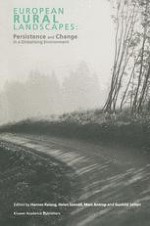2004 | OriginalPaper | Buchkapitel
The Human Factor in Biodiversity
Swedish Farmers’ Perspectives on Seminatural Grasslands
verfasst von : Marie Stenseke
Erschienen in: European Rural Landscapes: Persistence and Change in a Globalising Environment
Verlag: Springer Netherlands
Enthalten in: Professional Book Archive
Aktivieren Sie unsere intelligente Suche, um passende Fachinhalte oder Patente zu finden.
Wählen Sie Textabschnitte aus um mit Künstlicher Intelligenz passenden Patente zu finden. powered by
Markieren Sie Textabschnitte, um KI-gestützt weitere passende Inhalte zu finden. powered by
Landscape management and planning have become significant factors in post-productive rural areas. Through landscape policies, certain ideas about the fashion of the rural landscape are promoted. Policy-making, explicitly concerning the structures and qualities of the agricultural landscape in Sweden, was first initiated in the 1970s as a response to the ongoing abandonment of agricultural land and the degrading of biological values. Ecology and biodiversity developed as major concepts in the 1980s within rural landscape management, thus the planning of agricultural landscapes is very much the domain of the natural sciences (cf. Luz 2000). Agricultural landscapes, however, are not just a question of species, soils, water and climate, but also of culture, being inhabited by people and with a future dependent on human decisions and human activities. Moreover, landscapes vary as do the local and regional contexts, of which the physical features are integrated parts. With common agricultural and rural policies for a large part of Europe, there is an obvious risk that local and regional characteristics will be harmed by such general policies. Thus, landscape planning cannot only take physical facts as a point of departure, but must also deal with the human factor (Pretty 1998; cf. Van den Berg 2000; Bridgewater 2002). There is hence a need to find ways to integrate people and socio-economic aspects within landscape planning (cf. Fry 2001). That is the aim of this chapter.
